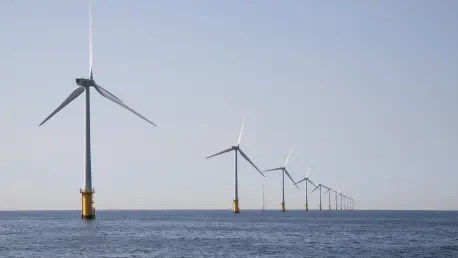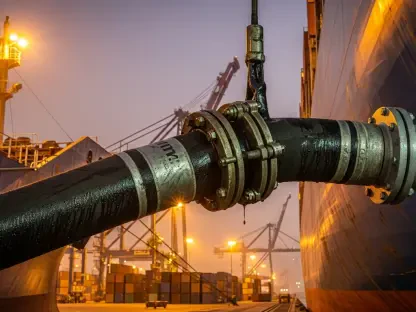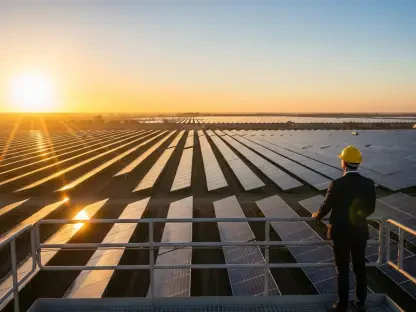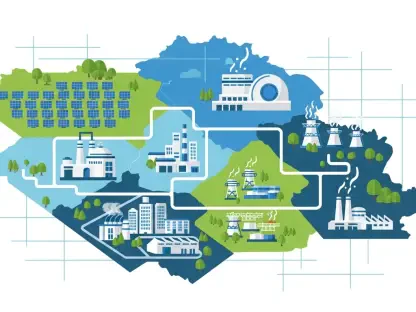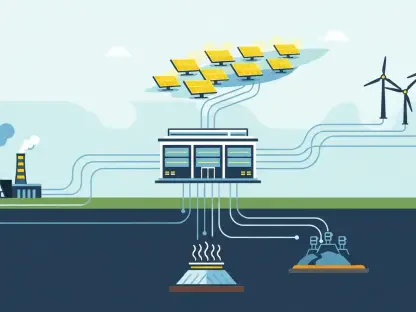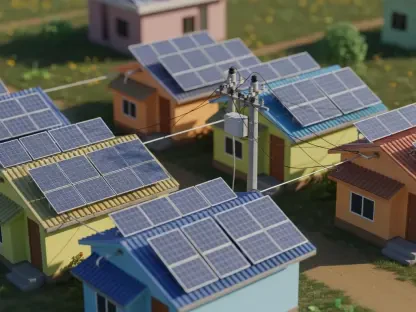Imagine a nation at the forefront of Europe’s green energy transition, with ambitious targets to power its future sustainably, yet facing an unprecedented roadblock: offshore wind tenders worth 2,500 MW receiving not a single bid. This alarming scenario is unfolding in Germany, casting a shadow over its renewable energy goals. This roundup gathers diverse perspectives from industry stakeholders, policymakers, and market analysts to unpack why these auctions failed, explore the underlying site and market risks, and highlight potential solutions. By diving into a spectrum of opinions and tips, the aim is to shed light on how Germany can navigate these turbulent waters and reclaim its momentum in offshore wind development.
Unpacking the Crisis in Germany’s Offshore Wind Sector
The failure of two major offshore wind tenders has sent ripples through Germany’s energy landscape, marking the first time such auctions have drawn no interest. Reports from utility associations and regulatory bodies point to a confluence of site-specific challenges and broader market uncertainties as key deterrents for developers. This setback is not merely a statistic but a critical warning sign for a country striving to meet stringent climate targets within the European framework.
Industry voices emphasize the urgency of addressing this crisis, noting that offshore wind is a linchpin for scaling renewable capacity. Without swift action, Germany risks lagging in a competitive global race toward sustainability. The following sections compile insights from various corners of the sector to dissect the barriers and chart a way forward.
Barriers to Offshore Wind Development Explored
Geographical Challenges Hindering Project Success
One prominent concern raised by policymakers centers on the geological and geographical limitations of the tendered sites. Deep waters and erosion-prone foundations pose significant technical hurdles, making projects less viable for developers. These conditions, often overlooked in initial planning stages, have sparked debates about whether site selection criteria are robust enough to ensure practical implementation.
Several industry observers argue that a more rigorous assessment of environmental factors is essential before sites are put up for auction. They suggest integrating advanced geological surveys to preempt such risks, a step that could restore developer confidence. The consensus leans toward revising planning frameworks to prioritize feasibility over sheer capacity targets.
A contrasting view from some market analysts highlights that while site challenges are real, they are not insurmountable with modern engineering solutions. However, the high costs associated with such innovations often deter investment, especially in a risk-averse economic climate. This divergence in opinion underscores the need for balanced strategies that address both technical and financial concerns.
Market Volatility Impacting Developer Interest
Shifting market dynamics have emerged as another critical barrier, with many stakeholders pointing to customer hesitancy in signing Power Purchase Agreements during periods of negative electricity prices. This trend leaves developers grappling with financial unpredictability as they struggle to secure long-term revenue streams. Industry groups have noted that such conditions make offshore wind less attractive compared to other energy investments.
Further compounding the issue are escalating project and capital costs, driven by geopolitical tensions and supply chain disruptions. Analysts within the sector warn that fluctuating electricity market risks add another layer of uncertainty, pushing developers to seek safer bets elsewhere. This perspective reveals a stark economic challenge that requires targeted policy interventions to mitigate.
On the other hand, a segment of financial experts suggests that innovative financing models, such as government-backed guarantees, could offset some of these market risks. They advocate for mechanisms that stabilize returns for developers, even amidst volatile conditions. This diversity in thought highlights a broader call for creative economic tools to bolster the sector’s appeal.
Stagnation and Push for Systemic Reforms
Current data paints a grim picture of stagnation, with Germany’s offshore wind capacity holding steady at 9.2 GW and no new turbine connections reported in recent months, despite 1.9 GW under construction. Industry advocates stress that this plateau reflects deeper flaws in auction mechanisms, which fail to incentivize participation. Their collective voice calls for a fundamental overhaul to jumpstart progress.
Suggestions for reform often draw inspiration from international models, with some policymakers proposing frameworks akin to those in the UK, which have shown success in revitalizing stalled sectors. These ideas focus on creating more flexible and supportive tender designs that adapt to current market realities. The urgency for such changes is palpable among those tracking Germany’s renewable trajectory.
A differing opinion from certain regulatory observers cautions against rapid overhauls, arguing that stability in policy is equally important for long-term investor trust. They recommend incremental adjustments rather than wholesale changes, emphasizing the need to balance innovation with predictability. This debate illustrates the complexity of crafting reforms that satisfy all stakeholders.
Wider Implications for Renewable Energy Goals
The tender failures signal a troubling disconnect between Germany’s ambitious green energy objectives and the practical challenges on the ground. Many industry leaders express concern that persistent issues could erode investor confidence, not just domestically but across Europe. This broader impact raises questions about the region’s collective ability to meet sustainability benchmarks.
Comparisons with other European nations reveal varied approaches to offshore wind, with some achieving greater success through adaptive policies and risk-sharing mechanisms. Experts in the field suggest that Germany could benefit from studying these strategies, particularly in areas like subsidy structures and site planning. Such cross-border learning is seen as a potential catalyst for improvement.
Speculation among analysts also touches on the long-term ramifications for Germany as Europe’s largest economy. If unresolved, these challenges might slow the pace of renewable adoption, affecting energy security and climate commitments. This forward-looking concern underscores the need for immediate dialogue and action to prevent a cascading effect on regional energy goals.
Strategic Insights from Diverse Voices
Synthesizing the range of opinions, it becomes clear that Germany’s offshore wind sector faces intertwined challenges of unfeasible site conditions, unpredictable market forces, and stagnant growth. Industry groups consistently urge a reevaluation of site selection processes to prioritize practicality, while financial analysts push for incentives that cushion developers against economic volatility. These insights collectively point to a multifaceted problem requiring nuanced solutions.
Actionable recommendations include refining auction designs to offer greater flexibility and introducing financial safeguards such as risk-sharing agreements. Policymakers are encouraged to collaborate with developers to identify and address specific pain points, ensuring that tender conditions align with real-world capabilities. Such steps could rebuild trust and stimulate renewed interest in the sector.
Additionally, stakeholders across the board advocate for enhanced transparency in planning and bidding processes to avoid surprises like underestimated site risks. Combining these tips with lessons from international peers could provide a robust framework for recovery. The shared goal remains to transform current setbacks into opportunities for sustainable advancement.
Reflecting on Lessons and Next Steps
Looking back, the discourse around Germany’s offshore wind tender failures revealed a complex web of geographical, economic, and policy challenges that demand urgent attention. The varied perspectives from industry players, analysts, and policymakers painted a comprehensive picture of a sector at a crossroads, grappling with immediate barriers while eyeing long-term ambitions.
Moving forward, a critical next step involves fostering collaborative platforms where stakeholders can co-design auction reforms and risk mitigation strategies. Exploring pilot projects with revised site criteria could also serve as a testing ground for innovative approaches. These actions, grounded in the insights gathered, offer a pathway to not only address past failures but also strengthen Germany’s position in the global renewable energy landscape for years to come.
